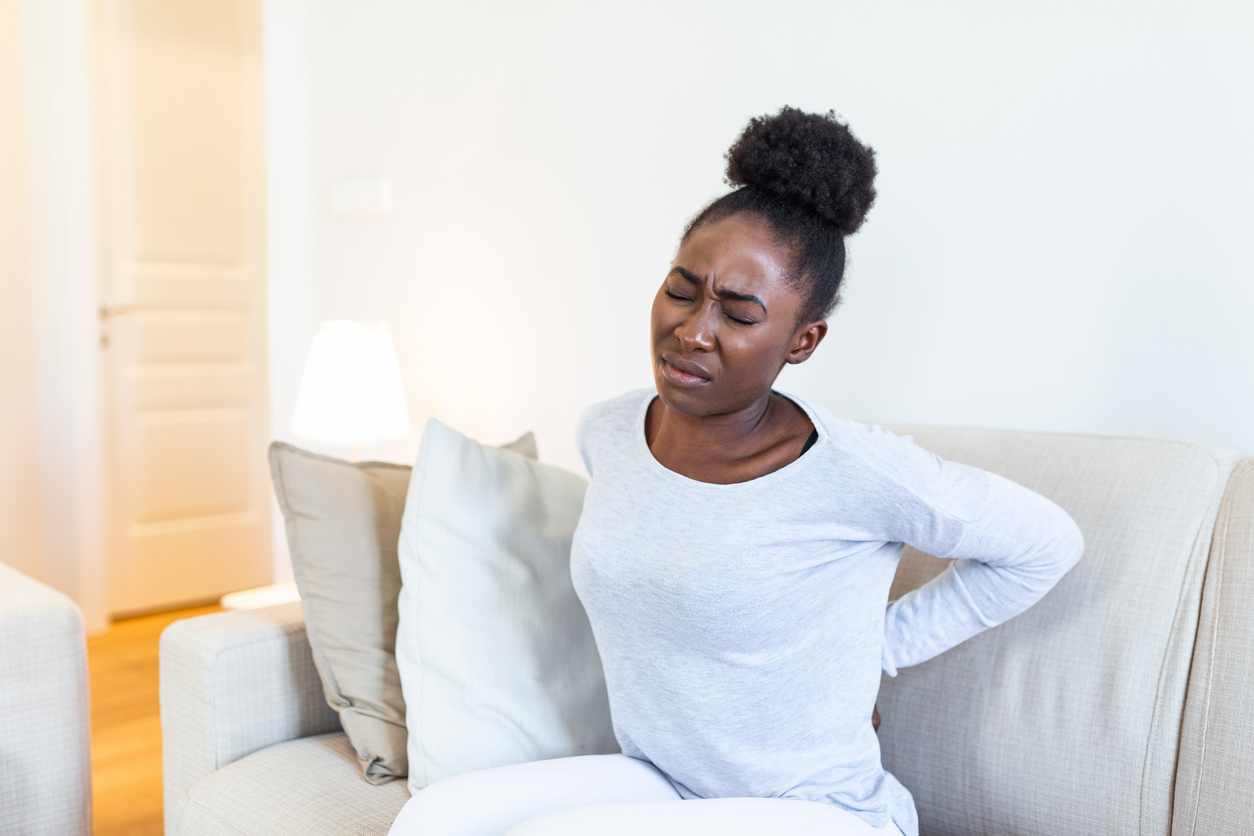A series of exercise routines you can do to help reduce any lower back pain (occasionally referred to as low back pain), including tension, stiffness and soreness.
Seek medical advice before starting these back pain exercises, and to stop immediately if you feel any pain.
These exercises from physiotherapist and back care expert Nick Sinfield help to stretch, strengthen and mobilise the lower back.
When starting out, go gently to get used to the movements and work out how far you can go into each position without feeling pain.
Aim to do this routine at least once a day, if the pain allows. You can complement this routine with walking, cycling and water-based activities.
Bottom to heels stretch
Stretches and mobilises the spine
Start position: Kneel on all fours, with your knees under hips and hands under shoulders. Don't over-arch your lower back. Keep your neck long, your shoulders back and don't lock your elbows.
Action: Slowly take your bottom backwards, maintaining the natural curve in the spine. Hold the stretch for 1 deep breath and return to the starting position.
Repeat 8 to 10 times.
Tips:
- Avoid sitting back on your heels if you have a knee problem.
- Ensure correct positioning with the help of a mirror.
- Only stretch as far as feels comfortable.
Knee rolls
Stretches and mobilises the spine
Start position: Lie on your back. Place a small flat cushion or book under your head. Keep your knees bent and together. Keep your upper body relaxed and your chin gently tucked in.
Action: Roll your knees to the left side, followed by your pelvis, keeping both shoulders on the floor. Hold the stretch for 1 deep breath and return to the starting position.
Repeat 8 to 10 times, alternating sides.
Tips:
- Only move as far as feels comfortable.
- Place a pillow between your knees for comfort.
Back extensions
Stretches and mobilises the spine backwards
Start position: Lie on your stomach and prop yourself on your elbows, lengthening your spine. Keep your shoulders back and neck long.
Action: Keeping your neck long, arch your back up by pushing down on your hands. You should feel a gentle stretch in the tummy muscles as you arch backwards. Breathe and hold for 5 to 10 seconds. Return to the starting position.
Repeat 8 to 10 times.
Tips:
- Don't bend your neck backwards.
- Keep your hips grounded.
Deep abdominal strengthening
Strengthens the deep supporting muscles around the spine
Start position: Lie on your back. Place a small, flat cushion or book under your head. Bend your knees, and keep your feet straight and hip-width apart. Keep your upper body relaxed and your chin gently tucked in.
Action: As you breathe out, draw up your pelvic and lower tummy (abdominal) muscles, as though you were doing up an imaginary zip along your tummy. Hold this gentle contraction while breathing from your abdomen for 5 to 10 breaths, and relax.
Repeat 5 times.
Tips:
- This is a slow, gentle tightening of the lower tummy region. Don't pull these muscles in using more than 25% of your maximum strength.
- Make sure you don't tense up through the neck, shoulders or legs.
Pelvic tilts
Stretches and strengthens the lower back
Start position: Lie on your back. Place a small, flat cushion or book under your head. Bend your knees and keep your feet straight and hip-width apart. Keep your upper body relaxed and your chin gently tucked in.
Action: Gently flatten your low back into the floor and tighten your tummy muscles. Now tilt your pelvis towards your heels until you feel a gentle arch in your lower back, feeling your back muscles tightening and return to the starting position.
Repeat 10 to 15 times, tilting your pelvis back and forth in a slow rocking motion.
Tips:
- Keep your deep abdominals working throughout.
- Don't press down through the neck, shoulders or feet.
Modification: Place 1 hand on your stomach and the other under your lower back to feel the correct muscles working.
Key points
- this series of daily exercises may help relieve lower back pain
- stretches, knee rolls and extensions stretch and mobilise the spine
- abdominal strengthening and pelvic tilts strengthen the muscles around the spine
- get used to the moves gently to know your limits
- get medical advice before starting this plan and stop if you feel pain
Date of last review: 24 June 2020





